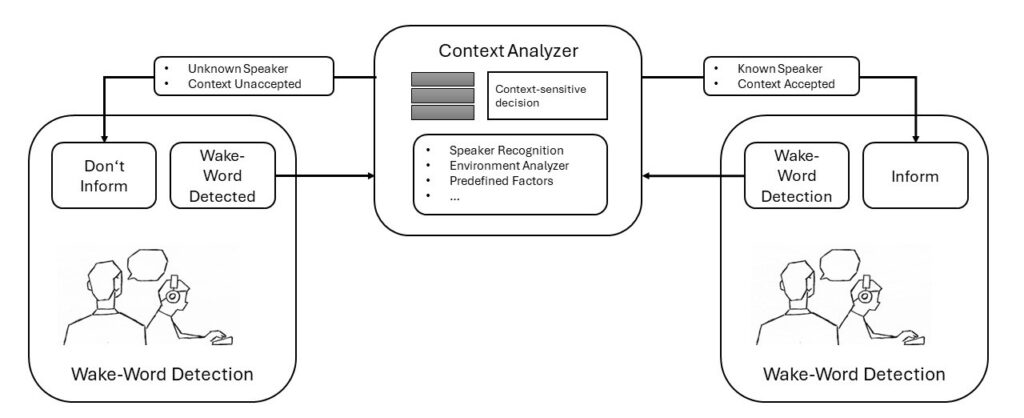Authors
Jan Schmalfuß-Schwarz, David Gollasch, Christin Engel, Meinhardt Branig & Gerhard Weber
Conference
ICCHP 2024
Format
Full Paper Contribution
Review-Process
Peer-Review
Reference
Schmalfuß-Schwarz, J., Gollasch, D., Engel, C., Branig, M., Weber, G. (2024). Open Sesame! Use of Headphones at Work Considering Social Acceptance. In: Miesenberger, K., Peňáz, P., Kobayashi, M. (eds) Computers Helping People with Special Needs. ICCHP 2024. Lecture Notes in Computer Science, vol 14751. Springer, Cham.
Zusammenfassung (übersetzt)
Focus is crucial for high performance in jobs requiring advanced cognitive tasks. Office environments often have high ambient noise and sudden sounds that distract workers. While headphones with Active Noise Cancellation (ANC) can mitigate these distractions, they also limit social interaction and may be considered isolating by others. The importance of social interaction in the workplace is noted in EN ISO 10075-2:2000 to prevent monotony. Therefore, there is a need for solutions that balance the use of ANC headphones for focused work with maintaining social interactions. This paper explores assistive technologies that are adapted to specific contexts and user groups, aiming to support concentration while enabling social engagement in office settings. Special attention is given to the needs of autistic individuals in vocational training centers, for whom a low-noise environment is crucial due to their sensitivity to contextual stimuli. We present observational results, analyze contextual factors, and propose a support concept specifically for autistic employees. Our findings lay the foundation for developing further applications that support communication and integration for autistic individuals in the workplace.
